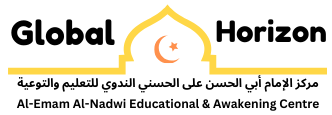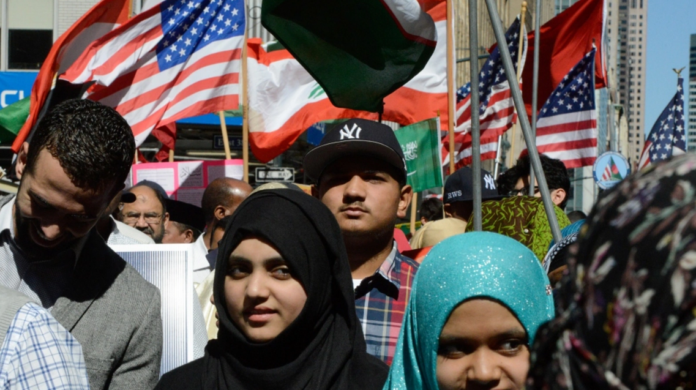In the early morning bustle of London’s Whitechapel Market, the aroma of halal chicken mingles with the scent of fresh-baked sourdough, Vietnamese noodles, and Ethiopian coffee. Hijabi mothers chat in Bengali beside third-generation Somali Londoners, while a Turkish grocer kneels to pray inside his shop. Now more than ever, this microcosm of multicultural modernity is the face of the Muslim world: diverse, mobile, and quietly—sometimes noisily—redefining its own identity.
Across continents, from Jakarta to Johannesburg to Birmingham and, importantly, from Lucknow to Kozhikode, questions of Muslim identity are being reshaped in real time. For the nearly two billion people who identify as Muslim, the globalized world is both a crucible and a creative space. The collapse of distances—physical and digital—means the global Muslim community now lives not just in neighboring villages, but in chat rooms and on social feeds that stretch from Casablanca to California—Delhi to Dubai.
Tradition in Motion
“I’m an American. I’m a Muslim. I don’t see the contradiction,” says Sarrah, a software engineer in Houston, Texas. Her hijab, worn proudly at her office, elicits both curiosity and—on rare occasions—bigotry. “It’s like walking with a visible sign of who you are, even when you want to disappear into the crowd,” she says.
But this balance—of faith, modernity, and belonging—is not uniquely Western. In India, home to nearly 200 million Muslims, the world’s largest Muslim-minority population, identity is never far from the rhythms of daily life. On the narrow, fragrant lanes of Hyderabad’s old city, Urdu poetry spills from auto rickshaw radios as vendors peddle kebabs beside the ancient Charminar. Here, Indo-Islamic culture has produced world-renowned art and music, from the qawwalis of Nizami brothers to the cinematic glamour of AR Rahman’s Sufi-inflected pop.
For Indian Muslims, the story of identity is not just resistance or assimilation but a creative negotiation—sometimes subtle, sometimes loud—between inheritance and innovation. Muslim women in Kerala’s Malabar region are as likely to be primary school teachers as they are Quran reciters. In Mumbai, hip-hop artists like Naezy sample both Bollywood and Arabic beats, voicing anxieties about ghettoization and pride in their mohalla roots.
The Paradoxes of Belonging
Indian Muslims have always found ways to shape—and be shaped by—their context. In Lucknow, Ganga-Jamuni tehzeeb, the intermingling of Hindu and Muslim cultures, is a living reality, embodied in the shared festivals, lingua franca, and culinary traditions that have survived centuries of tumult. In Kerala, robust educational networks and support from the Gulf diaspora have produced a uniquely cosmopolitan Muslim middle class, comfortable hosting Christian neighbors for Eid and sending WhatsApp forwards in both Malayalam and Arabic.
Innovation Within Faith
Ironically, some of the greatest innovation in Muslim self-understanding comes from the heartlands of Islam, and India is very much part of this story. From the theological debates held inside Delhi’s Jamia Millia Islamia—where students mobilize for minority rights and academic freedom—to female-led madrasas in Bihar, UP and other states, there’s a story of invention alongside tradition. Indian Muslim entrepreneurs have pioneered halal e-commerce platforms, while Indian Muslim fashion bloggers in Hyderabad and Bengaluru command large followings who see no contradiction between piety and platform heels.
Podcast channels, community news portals, and grassroots organizations leverage both Islamic values and Indian constitutionalism to empower the marginalized, often in multiple languages—Urdu, Hindi, English, Bengali, Malayalam. Whether it’s crowdfunding to save old mosques or collaborating with interfaith activists on climate change, today’s Indian Muslim identity is informed by global trends yet rooted in local struggles and solidarities.
The Challenge and the Hope
The paradoxes remain. For every moment of connection, there is the pain of misunderstood belief—a prayer rug mistaken for a sign of extremism, a beautifully tiled mosque debated in city hall, a Kashmiri child’s poem about loss going viral for reasons both beautiful and troubling.
Yet there is also hope born not of naïveté, but of lived complexity. In the urban labyrinth of Old Delhi or the tree-lined quarters of Aligarh, amidst the clamor and confusion, Indian Muslim identity is continually seeded anew—in the rhythm of a qawwali, the activism of a young lawyer defending constitutional rights, the quiet recitation of poetry that mourns and celebrates what it means to belong. As Amartya Sen once wrote, identity is plural, never monolithic. In India, as around the world, Muslim identity defies easy summaries. It is, at its best, a conversation—improvised, unfinished, and deeply human—between tradition and tomorrow.
Thank you,
Ahmad Suhaib Siddiqui Nadvi
Email: al.emam.education@gmail.com
Global Horizon
Al-Emam Al-Nadwi Education & Awakening Center



